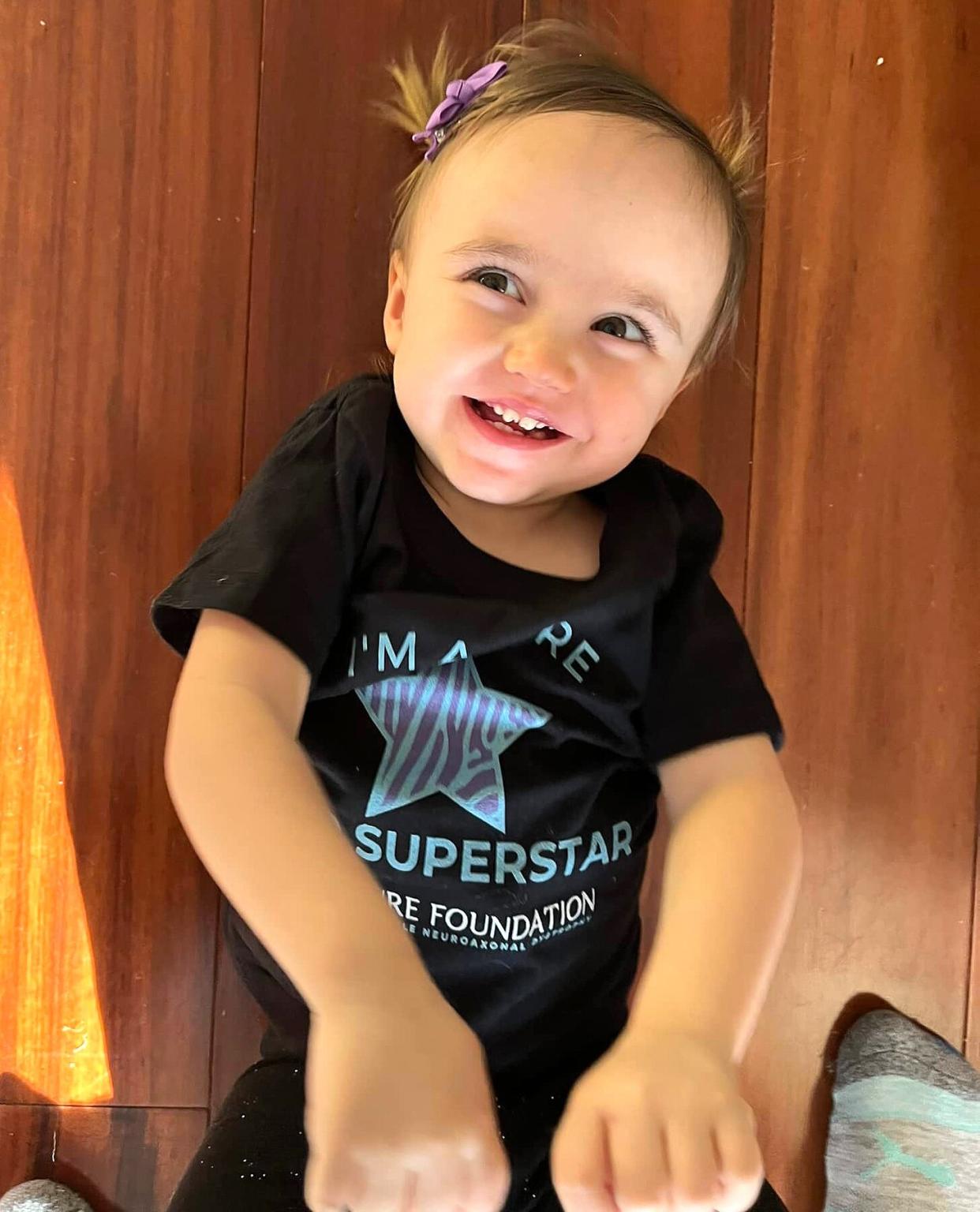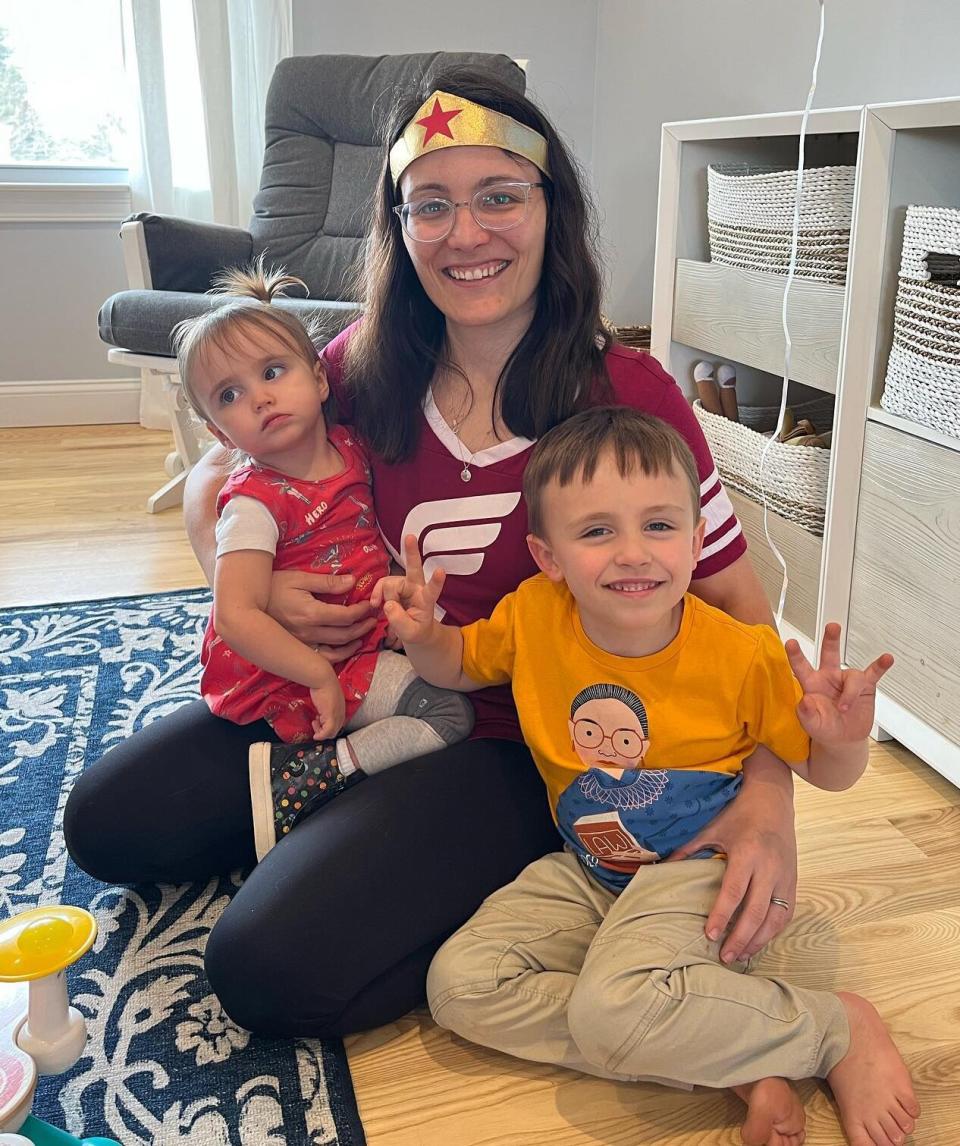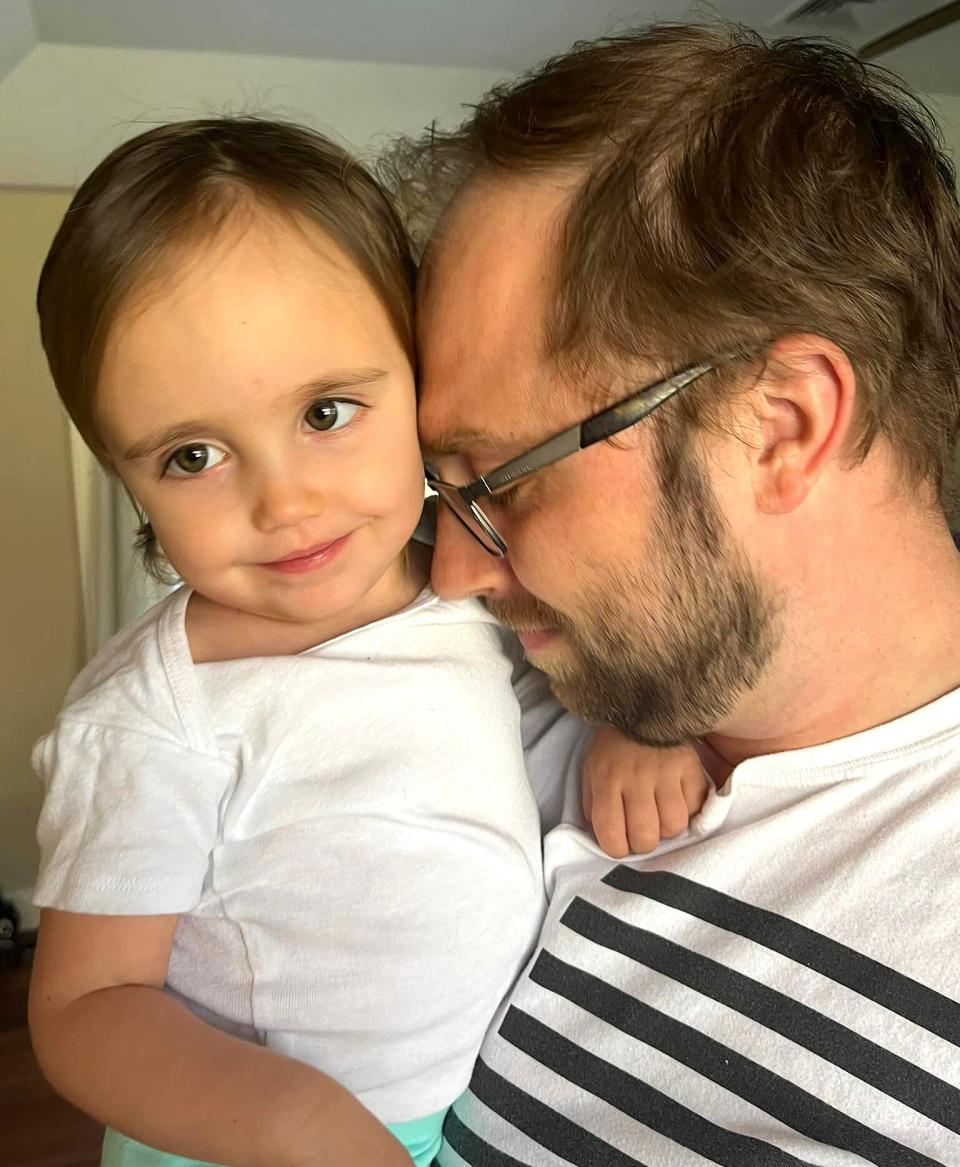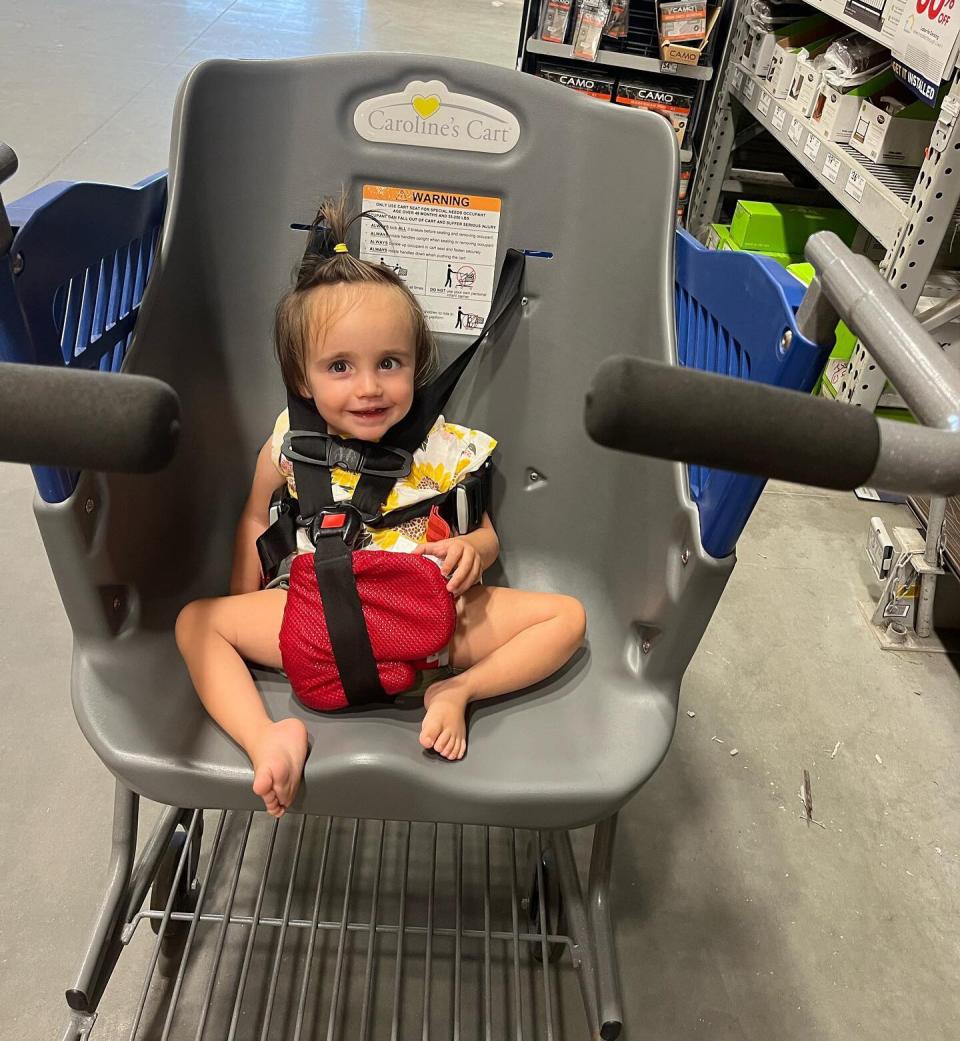Rhode Island Family Is Fundraising for a Cure for 2-Year-Old's Degenerative Disorder: 'Hard to Watch'

Loreen Pirnie
When Sage Pirnie was 16 months old, her mom Loreen noticed something odd: one of her eyes crossed over, and wouldn't look in the correct direction — a condition known as strabismus.
"It was the first thing that seemed really odd," Loreen, 37, tells PEOPLE exclusively.
Although Sage had been small since her birth in February 2020 and "wasn't really a good eater," Loreen says all pre-conception and post-birth genetic testing had been normal. Neither she nor her husband Steve, 37, were concerned. "She seemed like a happy, bright, healthy baby," says Loreen. "I was so excited to have her."
After the crossed eye, an MRI in June 2021 revealed no stroke, tumor or other neurological issues, which gave Loreen and Steve "a little bit of a relief." Living in Ann Arbor, Michigan, they were preparing to move Sage and her brother Reid, now 5, to Saunderstown, Rhode Island, to be closer to family.
"At the time, Steve had finished his MD and PhD and residency so it felt like we were like finally at the finish line," says Loreen. "We thought we were going home for the easier part of our life."

Loreen Pirnie
Instead they found themselves back on the east coast scrambling to find a new pediatrician and then a genetic specialist when Sage's health worsened. She was hospitalized for a week in October for "failure to thrive" (or decelerated or arrested physical growth), and within a few months had become noticeably weaker and had started losing some of her words.
"We were hoping someone, anyone, could shed light on what was happening," Loreen recalls. "No one really knew what was going on."
After several rounds of genetic testing, specialists at Hasbro Children's Hospital sequenced Sage's genome, and on Jan. 28, 2022, a few days before her second birthday, Sage received the diagnosis of Infantile Neuroaxonal Dystrophy (INAD).
INAD is a rare, genetic neurological disorder that usually involves the rapid regression of motor and intellectual skills. Symptoms usually present between 6 and 18 months, before which the child appears healthy. Muscle tone diminishes and children lose the ability to walk and eventually, talk. They develop vision problems and in some cases, seizures. Children with the diagnosis rarely live beyond 5 or 10 years, according to the NIH.
RELATED: TikTok Creator's Son Dies After She Shared His Health Battles with 1.7M Followers
"When I got the call, they told me the prognosis was that basically Sage would become paralyzed and we would lose her as far as her cognitive abilities — that she would have dementia basically, and slip into a vegetative state ultimately before she dies," Loreen says.
Sage is one of 150 children in the world with the terminal illness. The symptoms are similar to ALS, Alzheimer's and Parkinson's, but the disease only affects infants and young children.
"I knew something was really wrong, especially when she started losing words," says Loreen. "But this was unimaginable."

Loreen Pirnie
Unfortunately, there is no cure for INAD. For now, Loreen and Steve, both physicians, try to keep Sage happy and comfortable. She goes to physical therapy and speech therapy and her parents aim "to keep our quality of life as best it can be for as long as it can be."
INAD is the result of a genetic mutation, and the irony of the situation is not lost on the Pirnies: "Steve's PhD is in genetics — his specialty is physiatry, like getting people rehabilitated after they have a brain injury or stroke," says Loreen. "And I work in psychiatry and neurology. I deal with patients with dementia all the time. But there's still nothing we can do. It's like, we have all the background and the knowledge and we're just watching it happen."
RELATED: Boston Family Is Fundraising for Treatment for Son, 2, Who Has Rare Disease: 'Terror and Grief'
Loreen says it's "hard to watch" Sage, who never learned to walk, get weaker. "She's crawling as best she can," she says. "She doesn't really eat a lot because of a lack of chewing strength. She can't sit or hold her head up for very long. But we're glad for the movement she still does have. She's very giggly and interactive with us."
There is hope, though. The Pirnies — and other INAD families — are raising money for gene therapy research. Loreen says it's expected to cost about $7 million to make it to human trials. "We're hoping to get one million people to donate $7 to reach that amount, she says. The donation page is SevenforSage; campaign funds will go to the INADcure Foundation, a nonprofit charity run by families affected by INAD.

Loreen Pirnie
"What drug company is going to invest and be dedicated to something that's only going to cure like 40 people a year, or 150 to 200 people? That's not lucrative," Loreen says. "So if we want to have a chance to save our kids, or even stop another family from getting this prognosis, then we have to raise the money — so that's what we'll do."
With the help of friends and family, some of whom moved closer to help the Pirnie family during this difficult time, Loreen and Steve are slowly pushing through for Sage's sake.
"I know Sage: If she had the chance to grow up, she would be a smart, beautiful, kind, intelligent woman," says Loreen. "And I think she could have — would have — done great things. She's inspiring us to do them."

